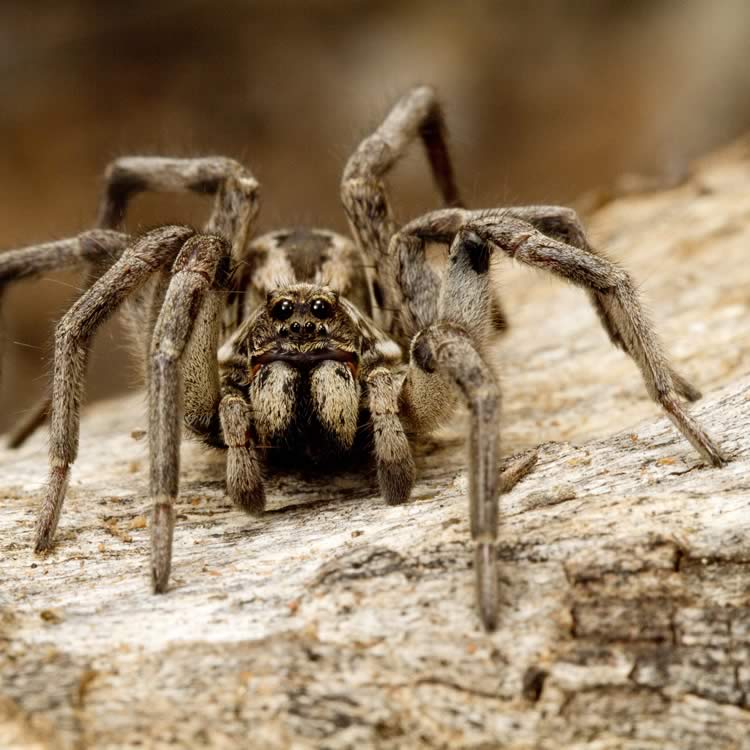Wolf spider

Community type
Habitat type
Tidal wetlands and macrophytes beds
The wolf spider lives all over Australia. They are a long-legged, hairy spider with males growing to 2.0 cm and females to 3.5 cm. They were given their name because of their tendency to stalk prey like wolves. The wolf spiders use their on speed and strength and eyesight to catch prey. They have three rows of eyes, two at the back, two in the centre and four in the front.
They live near water, open woodlands, grasslands, gardens and forests. They dig burrows 25 cm deep with their jaws and keep water out by either building a silk fence mixed with leaves, or building a lid on their burrows. The spider leaves its burrow at dusk to hunt for food. It is an open range hunting spider, meaning that it moves some distances when feeding. Wolf spiders eat crickets, locusts, other spiders, ants, grasshoppers, and even large animals like frogs, lizards, mice and tiny birds. The spider cannot eat meat, they can only drink the liquid out of the prey. They use a sucking motion like drinking liquid through a straw. Wolf spiders look quite similar to water spiders, who also live on creek banks and in wetland vegetation. But water spiders are smaller, hunt for insect prey by running across the water surface, and don’t have the large pair of central eyes of wolf spiders.
